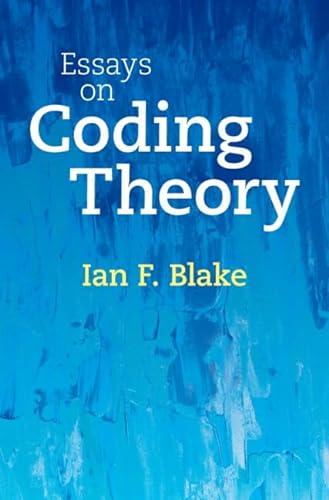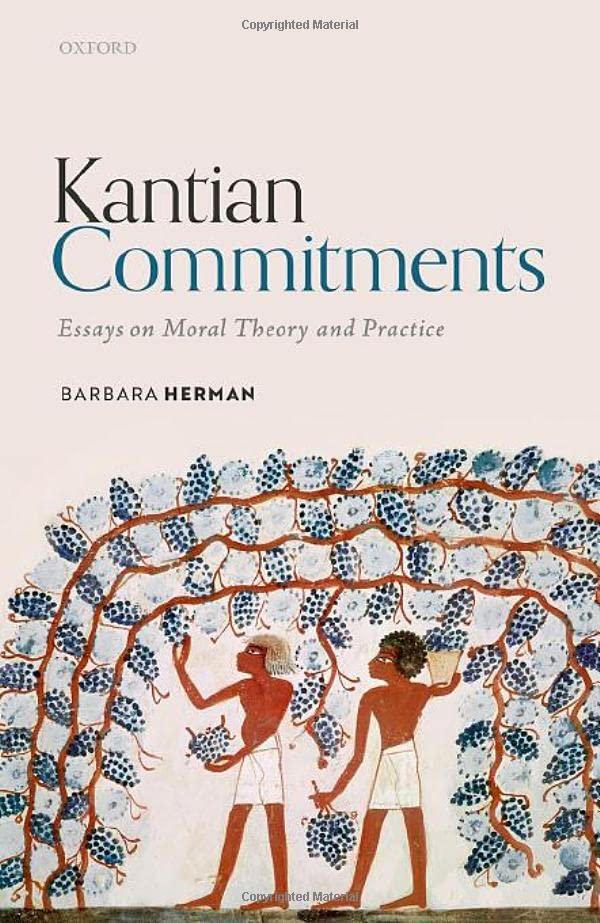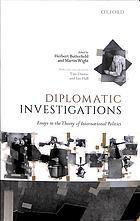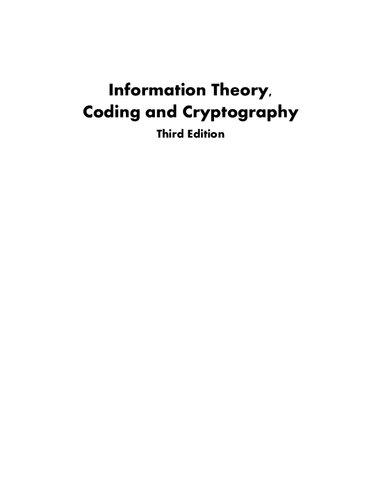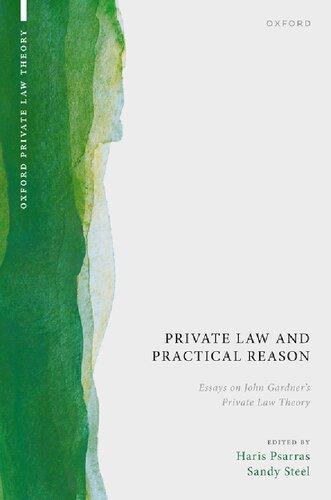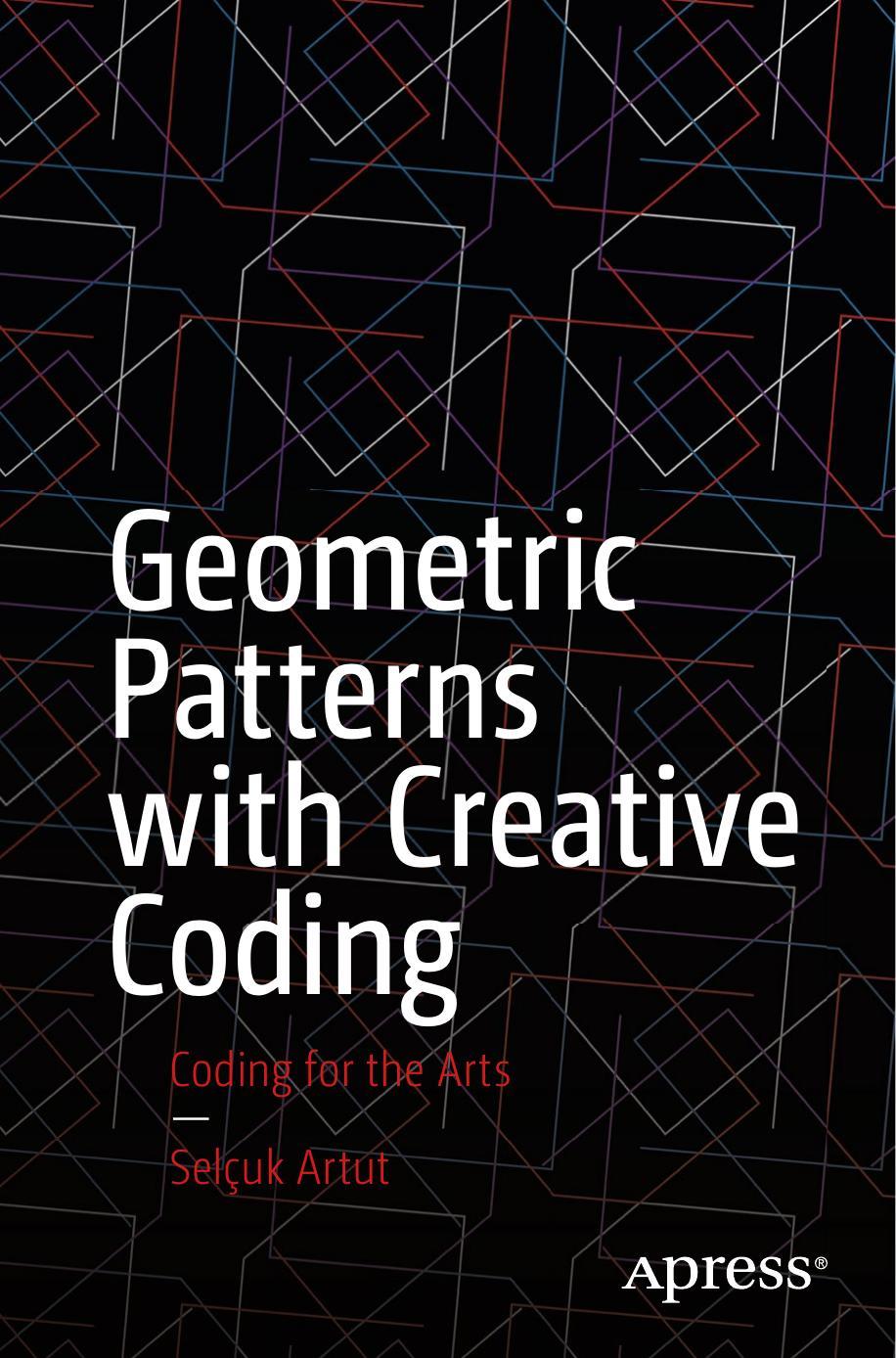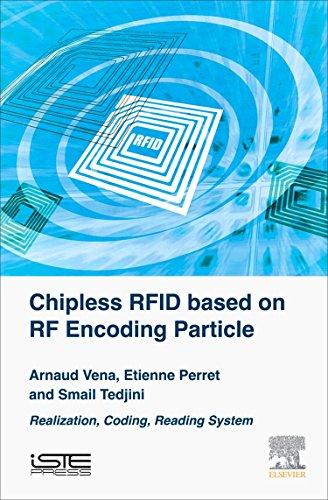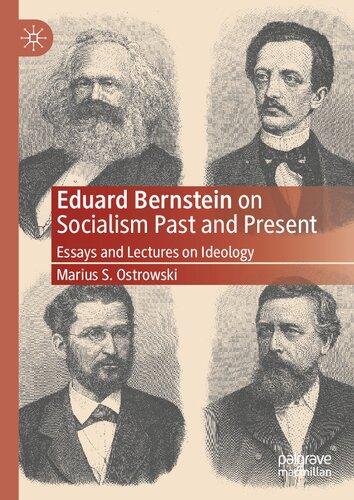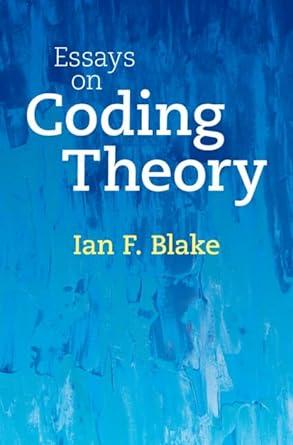1 Introduction
Sincetheearly2000swehaveseenthebasicnotionsofcodingtheoryexpand beyondtheroleoferrorcorrectionandalgebraiccodingtheory.Thepurpose ofthisvolumeistoprovideabriefintroductiontoafewofthedirectionsthat havebeentakenasaplatformforfurtherreading.Althoughtheapproachisto bedescriptivewithfewproofs,therearepartswhichareunavoidablytechnical andmorechallenging.
ItwasmentionedinthePrefacethattheprerequisiteforthisworkisabasic courseonalgebraiccodingtheoryandinformationtheory.Infactonlyafew aspectsoffinitefields,particularlycertainpropertiesofpolynomialsoverfinite fields,Reed–SolomoncodesandReed–Mullercodesandtheirgeneralizations areconsideredtoprovideacommonbasisandestablishthenotationtobeused. Thetracefunctiononfinitefieldsmakesafewappearancesinthechapters anditsbasicpropertiesarenoted.Mostoftheinformationwillbefamiliar andstatedinformallywithoutproof.Afewofthechaptersusenotionsof informationtheoryanddiscretememorylesschannelsandthebackground requiredforthesetopicsisalsobrieflyreviewedin Section1.2 Thefinal Section1.3 givesabriefdescriptionofthechaptersthatfollow.
1.1NotesonFiniteFieldsandCodingTheory
ElementsofFiniteFields
Afewbasicnotionsfromintegersandpolynomialswillbeusefulinseveral ofthechaptersaswellasconsideringpropertiesoffinitefields.The greatest commondivisor (gcd)oftwointegersorpolynomialsoverafieldwillbea stapleofmanycomputationsneededinseveralofthechapters.Abstractly,an integraldomainisacommutativeringinwhichtheproductoftwononzero elementsisnonzero,sometimesstatedasacommutativeringwithidentity
whichhasnozerodivisors(i.e.,twononzeroelements a,b suchthat ab = 0). A Euclideandomain isanintegraldomainwhichisfurnishedwithanorm function,inwhichthedivisionofanelementbyanotherwitharemainderof lowerdegreecanbeformulated.EquivalentlytheEuclideanalgorithm(EA) canbeformulatedinaEuclideandomain.
Recallthatthegcdoftwointegers a,b ∈ Z isthelargestinteger d thatdividesboth a and b .Let F beafieldanddenoteby F[x ]theringof polynomialsover F withcoefficientsfrom F.Thegcdoftwopolynomials a(x),b(x) ∈ F[x ]isthemonicpolynomial(coefficientofthehighestpower of x isunity)ofthegreatestdegree, d(x),thatdividesbothpolynomials.The EAforpolynomialsisanalgorithmthatproducesthegcdofpolynomials a(x) and b(x) (theoneforintegersissimilar)byfindingpolynomials u(x) and v(x) suchthat
d(x) = u(x)a(x) + v(x)b(x). (1.1)
Itisbrieflydescribedasfollows.Supposewithoutlossofgeneralitythat deg b(x)< deg a(x) andconsiderthesequenceofpolynomialdivisionsteps producingquotientandremainderpolynomials:
a(x) = q1 (x)b(x) + r1 (x), deg r1 < deg b
b(x) = q2 (x)r1 (x) + r2 (x), deg r2 < deg r1
r1 (x) = q3 (x)r2 (x) + r3 (x), deg r3 < deg r2 . . . .
rk (x) = qk +2 (x)rk +1 (x) + rk +2 (x), deg rk +2 < deg rk +1 rk +1 (x) = qk +3 (x)rk +2 (x),d(x) = rk +2 (x).
That d(x),thelastnonzeroremainder,istherequiredgcdisestablishedby tracingbackdivisibilityconditions.Furthermore,tracingbackshowshowtwo polynomials u(x) and v(x) arefoundsothat Equation1.1 holds.
Asimilarargumentholdsforintegers.Thegcdisdenoted (a,b) or (a(x),b(x)) forintegersandpolynomials,respectively.Ifthegcdoftwo integersorpolynomialsisunity,theyarereferredtoasbeing relativelyprime anddenoted (a,b) = 1or (a(x),b(x)) = 1.
Iftheprimefactorizationof n is n = p e1 1 p e2 2 p ek k ,p1,p2,...,pk distinctprimes,
thenthenumberofintegerslessthan n thatarerelativelyprimeto n isgiven bythe EulerTotientfunction φ(n) where
= k i =1 p ei 1 i (pi 1).
A field isacommutativeringwithidentityinwhichelementshaveadditive inverses(0denotestheadditiveidentity)andnonzeroelementshavemultiplicativeinverses(1denotesthemultiplicativeidentity).Itmayalsobeviewed asanintegraldomaininwhichthenonzeroelementsformamultiplicative group.
Afinitefieldisafieldwithafinitenumberofelements.Forafinitefield, thereisasmallestinteger c suchthateachnonzeroelementofthefieldadded toitselfatotalof c timesyields0.Suchanintegeriscalledthe characteristic ofthefield.If c isnotfinite,thefieldissaidtohavecharacteristic0.Notice thatinafinitefieldofcharacteristic2,additionandsubtractionareidenticalin that1 + 1 = 0.Denotethesetofnonzeroelementsofthefield F by F∗ .
Denoteby Zn thesetofintegersmodulo n, Zn ={0, 1, 2,...,n 1}.Itis afinitefieldiff n isaprime p, sinceif n = ab,a,b ∈ Z iscomposite,thenit haszerodivisorsandhenceisnotafield.Thusthecharacteristicofanyfinite fieldisaprimeandthesymbol p isreservedforsomearbitraryprimeinteger. Inafinitefield Zp ,arithmeticismodulo p .If a ∈ Zp,a = 0,theinverseof a canbefoundbyapplyingtheEAto a<p and p whichyieldstwointegers u,v ∈ Z suchthat
ua + vp = 1in Z
andso ua + vp(mod p) ≡ ua ≡ 1 (mod p) and a 1 ≡ u(mod p).The fieldwillbedenoted Fp .Inanyfinitefieldthereisasmallestsubfield,aset ofelementscontainingandgeneratedbytheunitelement1,referredtoasthe primesubfield,whichwillbe Fp forsomeprime p .
Centraltothenotionoffinitefieldsandtheirapplicationsistheroleof polynomialsoverthefield.Denotetheringofpolynomialsintheindeterminate x overafield F by F[x ]andnotethatitisaEuclideandomain(althoughthe ringofpolynomialswithtwovariables F[x,y ]isnot).Apolynomial f(x) = fn x n + fn 1 x n 1 +···+ f1 x + f0 ∈ F[x ],fi ∈ F ismoniciftheleading coefficient fn isunity.
Apolynomial f(x) ∈ F[x ]iscalledreducibleifitcanbeexpressedasthe productoftwononconstantpolynomialsandirreducibleifitisnottheproduct oftwononconstantpolynomials,i.e.,theredonotexisttwononconstant polynomials a(x),b(x) ∈ F[x ]suchthat f(x) = a(x)b(x).Let f(x) bea monicirreduciblepolynomialoverthefinitefield Fp andconsiderthesetof p n polynomialstakenmodulo f(x) whichwillbedenoted Fp [x ]/ f(x) = an 1 x n 1 + an 2 x n 2 +···+ a1 x + a0,ai ∈ Fp where f(x) istheidealin Fp generatedby f(x).Additionoftwopolynomialsisobviousandmultiplicationoftwopolynomialsistakenmodulothe
irreduciblepolynomial f(x),i.e.,theremainderafterdivisionby f(x).The inverseofanonzeropolynomial a(x) ∈ Fp [x ]/ f(x) isfoundviatheEAas before.Thatissincebydefinition (a(x),f(x)) = 1thereexistpolynomials u(x),v(x) suchthat
u(x)a(x) + v(x)f(x) = 1
andtheinverseof a(x) ∈ Fp [x ]/ f(x) is u(x).Algebraicallythisstructure mightbedescribedasthefactorfieldofthering Fp [x ]modulothemaximal ideal f(x) .
Itfollowstheset Fp [x ]/ f(x) formsafinitefieldwith p n elements.Itis conventionaltodenote q = p n andthefieldof p n elementsaseither Fpn or Fq .Everyfinitefieldcanbeshowntohaveanumberofelementsoftheform q = p n forsomeprime p andpositiveinteger n andthatanytwofinitefieldsof thesameorderareisomorphic.Itwillbenotedthatanirreduciblepolynomial ofdegree n willalwaysexist(see Equation1.4) andsoallfinitefieldscanbe constructedinthismanner.
Ingeneral,suppose q = p m andlet f(x) beamonicirreduciblepolynomial over Fq ofdegree m (whichwillbeshowntoalwaysexist).Thesetof q m polynomialsover Fq ofdegreelessthan m withmultiplicationmodulo f(x) willthenbeafinitefieldwith q m elementsanddesignated Fq m .Forfuture referencedenotethesetofpolynomialsofdegreelessthan m by Fq <m [x ] andthoselessthanorequalby Fq ≤m [x ].Sinceitinvolvesnomoreeffort, thisgeneralfinitefield Fq m willbeexaminedforbasicproperties.Thesubset Fq ⊆ Fq m isafield,i.e.,asubsetthathasallthepropertiesofafield,asubfield of Fq m .
Theremainderofthesubsectioncontainsabriefdiscussionofthestructure offinitefieldsandpolynomialsusuallyfoundinafirstcourseofcodingtheory. Itisstraightforwardtoshowthatoveranyfield F (x m 1) divides (x n 1) iff m divides n,writtenas (x m 1) (x n 1) iff m | n. Further,foranyprime p , (p m 1) (p n 1) iff m | n.
Themultiplicativegroupofafinitefield, F∗ q m ,canbeshowntobecyclic (generatedbyasingleelement).Theorderofanonzeroelement α inafield F isthesmallestpositiveinteger suchthat α = 1,denotedasord(α )= and referredtoastheorderof α .Similarlyif isthesmallestintegersuchthatthe polynomial f(x) | x 1 ,thepolynomialissaidtohaveorder overthe
understoodfield.Theorderofanirreduciblepolynomialisalsotheorderof itszeros.
If β hasorder , then β i hasorder /(i, ).Similarlyif β hasorder and γ hasorder κ and ( ,κ) = 1, thentheorderof βγ is κ
Anelement α ∈ Fq m ofmaximumorder q m 1iscalleda primitiveelement.
If α isprimitive,then α i isalsoprimitiveiff (i,q m 1) = 1andthereare φ(q m 1) primitiveelementsin Fq m .
Anoteontherepresentationoffinitefieldsisinorder.Theorderof anirreduciblepolynomial f(x) over Fq ofdegree k canbedeterminedby successivelydividingthepolynomial (x n 1) by f(x) over Fq as n increases. Ifthesmallestsuch n is q k 1, thepolynomialisprimitive.Toeffectthe division,arithmeticinthefield Fq isneeded.If f(x) isprimitiveofdegree k over Fq ,onecouldthentakethefieldastheelements
Fq k = 0, 1,x,x 2 ,...,x q k 2
Bydefinitiontheelementsaredistinct.Eachoftheseelementscouldbetaken modulo f(x) (whichiszerointhefield)whichwouldresultinthefield elementsbeingallpolynomialsover Fq ofdegreelessthan k .Multiplication inthisfieldwouldbepolynomialstakenmodulo f(x).Thefieldelement x isaprimitiveelement.Whilethisisavalidpresentation,itisalsocommonto identifytheelement x byanelement α withthestatement“let α beazeroofthe primitivepolynomial f(x) ofdegree k over Fq .”Thetwoviewsareequivalent.
Thereare φ(q k 1) primitiveelementsin Fq k andsincethedegreeof anirreduciblepolynomialwithoneoftheseprimitiveelementsasazerois necessarily k ,thereareexactly φ(q k 1)/k primitivepolynomialsofdegree k over Fq .
Suppose f(x) isanirreduciblenonprimitivepolynomialofdegree k over Fq .Supposeitisoforder n<q k 1, i.e., f(x) | (x n 1).Onecandefinethe field Fq k asthesetofpolynomialsofdegreelessthan k
withmultiplicationmodulo f(x).Theelement x isnotprimitiveif n<(q k 1) butisanelementoforder n,n | q k 1(althoughtherearestill φ(q k 1) primitiveelementsinthefield).
Let α ∈ Fq m beanelementofmaximumorder (q m 1) (i.e.,primitive)and denotethemultiplicativegroupofnonzeroelementsas
Let β ∈ F∗ q m beanelementoforder whichgeneratesacyclicmultiplicativesubgroupof F∗ q m oforder andforsuchasubgroup | (q m 1).The orderofanynonzeroelementin Fq m divides (q m 1).Thus
(1.3) isaconvenientfactorization(over Fq m ).
Suppose Fq m hasasubfield Fq k –asubsetofelementswhichisitselfafield. Thenumberofnonzeroelementsin Fq k is (q k 1) andthissetmustforma multiplicativesubgroupof F∗ q m andhence (q k 1) | (q m 1) andthisimplies that k | m andthat Fq k isasubfieldof Fq m iff k | m.Suppose Fq k isasubfield of Fq m .Then
∈ Fq m isin Fq k iff β q k = β and β = α j ∈ Fq m isazeroofthemonicirreduciblepolynomial f(x) of degree k over Fq .Thus
f(x) = x k + fk 1 x k 1 +···+ f1 x + f0,fi ∈ Fq ,i = 0, 1, 2,...,k 1 and f(α j ) = 0.Noticethat
f(x)q = x k + fk 1 x k 1 +···+ f1 x + f0 q = x kq + f q k 1 x q(k 1) +···+ f q 1 x q + f q 0 = x kq + fk 1 x q(k 1) +···+ f1 x q + f0, as f q i = fI for fi ∈ Fq = f(x q )
andsince β = α j isazeroof f(x) sois β q .Suppose isthesmallestinteger suchthat β q = β (sincethefieldisfinitetheremustbesuchan )andlet Cj = α j = β,β q ,β q 2 ,...,β q 1 referredtoastheconjugacyclassof β .Considerthepolynomial g(x) = 1 i =0 x β q j andnotethat g(x)q =
=
q ) and,asabove, g(x) hascoefficientsin Fq ,i.e., g(x) ∈ Fq [x ].Itfollowsthat g(x) mustdivide f(x) andsince f(x) wasassumedmonicandirreducibleit mustbethat g(x) = f(x).Thusifonezerooftheirreducible f(x) isin Fq m ,
allare.Eachconjugacyclassofthefinitefieldcorrespondstoanirreducible polynomialover Fq .
Bysimilarreasoningitcanbeshownthatif f(x) isirreducibleofdegree k over Fq ,then f(x) | (x q m x) iff k | m.Itfollowsthatthepolynomial x q m x istheproductofallmonicirreduciblepolynomialswhosedegreesdivide m. Thus
x q m x =
f (x) irreducible over Fq degreef(x)=k |m f(x). Thisallowsaconvenientenumerationofthepolynomials.If Nq (m) isthe numberofmonicirreduciblepolynomialsofdegree m over Fq ,thenbythe aboveequation
whichcanbeinvertedusingstandardcombinatorialtechniquesas
where μ(n) istheM ¨ obiusfunctionequalto1if n = 1, ( 1)s if n isthe productof s distinctprimesandzerootherwise.Itcanbeshownthat Nq (k) is atleastoneforallprimepowers q andallpositiveintegers k .Thusirreducible polynomialsofdegree k overafieldoforder q existforallallowable parametersandhencefinitefieldsexistforallallowableparametersets. Considerthefollowingexample.
Example1.1 Considerthefieldextension F26 overthebasefield F2 .The polynomial x 26 x factorsintoallirreduciblepolynomialsofdegreedividing 6,i.e.,thoseofdegrees1, 2, 3and6.Fromthepreviousformula
N2 (1) = 2,N2 (2) = 1,N2 (3) = 2,N2 (6) = 9.
Foraprimitiveelement α theconjugacyclassesof F26 over F2 are(obtainedby raisingelementsbysuccessivepowersof2mod63,withtentativepolynomials associatedwiththeclassesdesignated):
9,α 18,α 36 ≈ f5 (x) α 11,α 22,α 44,α 25,α 50,α 37 ≈ f6 (x)
α 13,α 26,α 52,α 41,α 19,α 38 ≈ f7 (x)
α 15,α 30,α 60,α 57,α 51,α 39 ≈ f8 (x)
α 21,α 42 ≈ f9 (x)
α 23,α 46,α 29,α 58,α 53,α 43 ≈ f10 (x)
α 27,α 54,α 45 ≈ f11 (x)
α 31,α 62,α 61,α 59,α 55,α 47 ≈ f12 (x).
Bytheabovediscussionasetwith integerscorrespondstoanirreducible polynomialover F2 ofdegree .Further,theorderofthepolynomialisthe orderoftheconjugatesinthecorrespondingconjugacyclass.
Noticethereare φ(63) = φ(9 7) = 3 2 6 = 36primitiveelementsin F26 andhencethereare36/6 = 6primitivepolynomialsofdegree6over F2 .If α ischosenasazerooftheprimitivepolynomial f1 (x) = x 6 + x + 1, thenthe correspondenceoftheaboveconjugacyclasseswithirreduciblepolynomialsis
Poly.No.Polynomial
Order
f1 (x)x 6 + x + 163
f2 (x)x 6 + x 4 + x 3 + x 2 + x + 121
f3 (x)x 6 + x 5 + x 2 + x + 163
f4 (x)x 6 + x 3 + 19
f5 (x)x 3 + x 2 + 17
f6 (x)x 6 + x 5 + x 3 + x 2 + 163
f7 (x)x 6 + x 4 + x 3 + x + 163
f8 (x)x 6 + x 5 + x 4 + x 2 + 121
f9 (x)x 2 + x + 13
f10 (x)x 6 + x 5 + x 4 + x + 163
f11 (x)x 3 + x + 17
f12 (x)x 6 + x 5 + 163
Theotherthreeirreduciblepolynomialsofdegree6areoforders21(twoof them, f2 (x) and f8 (x))andnine(f4 (x)).Theprimitiveelement α intheabove conjugacyclassescouldhavebeenchosenasazeroofanyoftheprimitive polynomials.Thechoicedeterminesarithmeticin F26 butallchoiceswill leadtoisomorphicrepresentations.Differentchoiceswouldhaveresultedin differentassociationsbetweenconjugacyclassesandpolynomials.
Notincludedintheabovetableistheconjugacyclass {α 63 } which correspondstothepolynomial x + 1andtheclass {0} whichcorrespondsto thepolynomial x .Theproductofallthesepolynomialsis x 26 x .
Thenotionofa minimalpolynomial ofafieldelementisofimportancefor coding.The minimalpolynomial mβ (x) ofanelement β ∈ Fq n over Fq isthat
themonicirreduciblepolynomialofleastdegreethathas β asazero.From theabovediscussion,everyelementinaconjugacyclasshasthesameminimal polynomial.
Furthernotionsoffinitefieldsthatwillberequiredincludethatofa polynomialbasis of Fq n over Fq whichisoneofaform {1,α,α 2,...,α n 1 } forsome α ∈ Fq n forwhichtheelementsarelinearlyindependentover Fq . Abasisof Fq n over Fq oftheform {α,α q ,α q 2 ,...,α q n 1 } iscalleda normal basis andsuchbasesalwaysexist.Inthecasethat α ∈ Fq n isprimitive(of order q n 1)itiscalledaprimitivenormalbasis.
TheTraceFunctionofFiniteFields
Furtherpropertiesofthetracefunctionthatareusuallydiscussedinafirst courseoncodingwillproveusefulatseveralpointsinthechapters.Let Fq n beanextensionfieldoforder n over Fq .Foranelement α ∈ Fq n the trace function of Fq n over Fq isdefinedas
Trq n |q (α) = n 1 i =0 α q i .
Thefunctionenjoysmanyproperties,mostnotablythat [8]
(i) Trq n |q (α + β) = Trq n |q (α) + Trq n |q (β),α,β ∈ Fq n
(ii) Trq n |q (aα) = a Trq n |q (α),a ∈ Fq ,α ∈ Fq n
(iii) Trq n |q (a) = na,a ∈ Fq
(iv) Trq n |q isanontomap.
Toshowproperty(iv),whichthetracemapisonto(i.e.,codomainis Fq ),it issufficienttoshowthatthereexistsanelement α of Fq n forwhichTrq n |q (α) = 0sinceifTrq n |q (α) = b = 0,b ∈ Fq ,then(propertyii)Trq n |q (b 1 α) = 1and henceallelementsof Fq aremappedonto.Considerthepolynomialequation x q n 1 + x q n 2 +···+ x = 0 thatcanhaveatmost q n 1 solutionsin Fq n .Hencetheremustexistelements of β ∈ Fq n forwhichTrq n |q (β) = 0.Aneasyargumentshowsthatinfact exactly q n 1 elementsof Fq n haveatraceof a ∈ Fq foreachelementof Fq .
Noticethatitalsofollowsfromtheseobservationsthat x q n x = a ∈Fq x q n 1 + x q n 2 +···+ x a sinceeachelementof Fq n isazerooftheLHSandexactlyonetermof theRHS.
Also,suppose [8] L( ) isalinearfunctionfrom Fq n to Fq inthesensethat forall a1,a2 ∈ Fq andall α1,α2 ∈ Fq n
L(a1 α1 + a2 α2 ) = a1 L(α1 ) + a2 L(α2 )
Then L(·) mustbeoftheform
L(α) = Trq n |q (βα) = Lβ (α)
forsome β .Thusthesetofsuchlinearfunctionsispreciselytheset
Lβ ( ),β ∈ Fq n
andthesearedistinctfunctionsfordistinct β .
Ausefulpropertyofthetracefunction([8],lemma3.51, [11],lemma9.3) isthatif u1,u2,...,un isabasisof Fq n over Fq andif
Trq n |q (αui ) = 0for i = 1, 2,...,n,α ∈ Fq n ,
then α = 0.Equivalentlyiffor α ∈ Fq n
Trq n |q (αu) = 0 ∀u ∈ Fq n , (1.5)
then α = 0.Thisfollowsfromthetracemapbeingonto.Itwillproveauseful propertyinthesequel.Italsofollowsfromthefactthat
isnonsingulariff u1,u2,...,un ∈ Fq n arelinearlyindependentover Fq . Aformulaforthedeterminantofthismatrixisgivenin [8].
If μ ={μ1,μ2,...,μn } isabasisof Fq n over Fq ,thenabasis ν = {ν1,ν2,...,νn } iscalleda tracedualbasis if
Trq n |q (μi νj ) = δi,j = 1if i = j 0if i = j andforagivenbasisauniquedualbasisexists.Itisnotedthatif μ = {μ1,...,μn } isadualbasisforthebasis {ν1,...,νn }, thengiven
y = n i =1 ai μi then y = n i =1 Trq n |q (yνi )μi ,ai ∈ Fq .(1.6)
Thusanelement y ∈ Fq n canberepresentedinthebasis μ,bythetraces
Trq n |q (yνj ),j = 1, 2,...,n.
Itcanbeshownthatforagivennormalbasis,thedualbasisisalsonormal. Aconvenientreferenceforsuchmaterialis [8, 12].
ElementsofCodingTheory
AfewcommentsonBCH,Reed–Solomon(RS),GeneralizedReed–Solomon (GRS),Reed–Muller(RM)andGeneralizedReed–Muller(GRM)codesare noted.Recallthatacycliccodeoflength n anddimension k andminimum distance d over Fq ,designatedasan (n,k,d)q code,isdefinedbyapolynomial g(x) ∈ Fq [x ]ofdegree (n k), g(x) | (x n 1) oralternativelyasaprincipal ideal g(x) inthefactorring R = Fq [x ]/ x n 1 .
ConsideraBCHcodeoflength n | (q m 1) over Fq .Let β beaprimitive n-throotofunity(anelementoforderexactly n).Let
g(x) = lcm mβ (x),mβ 2 (x),...,mβ 2t (x)
betheminimumdegreemonicpolynomialwiththesequence β,β 2,...,β 2t of 2t elementsaszeros(amongotherelementsaszeros).DefinetheBCHcode withlength n designeddistance2t + 1over Fq asthecycliccode C = g(x) orequivalentlyasthecodewithnullspaceover Fq oftheparity-checkmatrix
Thattheminimumdistanceboundofthiscode, d = 2t + 1,followssinceany 2t × 2t submatrixof H isaVandermondematrixandisnonsingularsincethe elementsofthefirstrowaredistinct.
AcyclicReed–Solomon (n,k,d = n k + 1)q codecanbegeneratedby choosingageneratorpolynomialoftheform
g(x) = n k i =1 (x α i ),α ∈ Fq ,α primitiveoforder n.
Thatthecodehasaminimumdistance d = n k + 1followseasilyfromthe abovediscussion.
AstandardsimpleconstructionofReed–Solomoncodesoverafinitefield Fq oflength n thatwillbeofuseinthisvolumeisasfollows.Let u = {u1,u2,...,un } beaset,referredtoasthe evaluationset (andviewedasa setratherthanavector–weuseboldfacelowercaselettersforbothsetsand
vectors)of n ≤ q distinctevaluationelementsof Fq .Asnoted, F<k q [x ]isthe setofpolynomialsover Fq ofdegreelessthan k .Thenanotherincarnationof aReed–Solomoncodecanbetakenas
RSn,k (u,q) = cf = (f(u1 ),f(u2 ),...,f(un )),f ∈ F<k q [x ]
where cf isthecodewordassociatedwiththepolynomial f.Thatthisisan (n,k,d = n k + 1)q codefollowsreadilyfromthefactthatapolynomialof degreelessthan k over Fq canhaveatmost k 1zeros.Asthecodesatisfies theSingletonbound d ≤ n k + 1withequalityitisreferredtoas maximum distanceseparable (MDS)codeandthedualofsuchacodeisalsoMDS. Ofcoursetheconstructionisvalidforanyfinitefield,e.g., Fq . ThedualofanRScodeisgenerallynotanRScode.
Aslightbutusefulgeneralizationofthiscodeisthe GeneralizedReed–Solomon (GRS)codedenotedas GRSn,k (u, v,q),where u istheevaluationset ofdistinctfieldnonzeroelementsasaboveand v ={v1,v2,...,vn },vi ∈ F ∗ q (referredtoasthe multiplierset)isasetofnotnecessarilydistinctnonzero elementsof Fq .Then GRSn,k (u, v,q) isthe(linear)setofcodewords:
GRSn,k (u, v,q) = cf = (v1 f(u1 ),v2 f(u2 ),...,vn f(un )),f ∈ F<k q [x ] .
Sincetheminimumdistanceofthislinearsetofcodewordsis n k + 1 thecodeisMDS,forthesamereasonnotedabove.ClearlyanRScodeisa GRSn,k (u, v,q) codewith v = (1, 1,..., 1)
ThedualofanyMDScodeisMDS.Itisalsotrue [7,9, 10] thatthedual ofaGRScodeisalsoaGRScode.Inparticular,given GRSn,k (u, v,q) there existsaset w ∈ (F∗ q )n suchthat
GRS ⊥ n,k (u, v,q) = GRSn,n k (u, w,q) = w1 g(u1 ),w2 g(u2 ),...,wn g(un ),g ∈ F<n k q [x ] . (1.7)
Inotherwords,forany f(x) ∈ F<k q [x ]and g(x) ∈ F<n k q [x ]foragiven evaluationset u ={u1,...,un } andmultiplierset v ={v1,...,vn } thereis amultiplierset w ={w1,...,wn } suchthattheassociatedcodewords cf ∈ GRSn,k (u, v,q) and cg ∈ GRSn,n k (u, w,q) aresuchthat (cf , cg ) = v1 f(u1 )w1 g(u1 ) +···+ vn f(un )wn g(un ) = 0.
Indeedthemultipliersetvector w canbecomputedas wi = vi j =i (ui uj ) 1 . (1.8)
Toseethis,foragivenevaluationset u (distinctelements),denote
e(x) = n i =1 (x ui ) and ei (x) = e(x)/(x ui ) = k =i (x uk ), amonicpolynomialofdegree (n 1).Itisclearthat ei (uj ) ei (ui ) = 1if j = i 0if j = i .
Itfollowsthatforanypolynomial h(x) ∈ Fq [x ]ofdegreelessthan n thattakes onvalues h(ui ) ontheevaluationset u ={u1,u2,...,un } canbeexpressedas h(x) = n i =1 h(ui ) ei (x) ei (ui ) .
Toverify Equation1.7 considerapplyingthisinterpolationformula to f(x)g(x) where f(x) isacodewordpolynomial f(x) ∈ F<k q [x ] (in GRSn,k (u, v,q))and g(x) ∈ F<n k q [x ](in GRSn,k (u, v,q)⊥ = GRSn,n k (u, w,q))whereitisclaimedthatthetwomultipliersets v = {v1,v2,...,vn } and w ={w1,w2,...,wn } arerelatedasin Equation1.8. Usingtheaboveinterpolationformulaontheproduct f(x)g(x) (ofdegree atmost (n 2))gives f(x)g(x) = n k =1 f(uk )g(uk ) ek (x) ek (uk )
Thecoefficientof x n 1 ontheleftsideis0whileontherightsideis1(as ek (x) ismonicofdegree (n 1))andhence 0 = n k =1 1 ek (uk ) f(uk )g(uk ) = n k =1 (vk f(uk )) v 1 k ek (uk ) g(uk ) = n k =1 (vk f(uk ))(wk g(uk ))(by Equation 1.8) = (cf, cg ) = 0.
Itisnotedinparticularthat RS ⊥ n,k (u,q) = GRSn,n k (u, w,q) forthemultiplierset wi = j =i (ui uj )
Reed–MullerCodes
Reed–Muller(RM)codesarediscussedinsomedepthinmostbooksoncoding (e.g., [3,4])withperhapsthemostcomprehensivebeing [2] whichconsiders theirrelationshiptoEuclideangeometriesandcombinatorialdesigns.The propertiesofRMcodesaremosteasilydevelopedforthebinaryfieldbutthe generalcasewillbeconsideredhere–the GeneralizedReed–Muller (GRM) codes(generalizedinadifferentsensethantheGRScodes).Thecodesare ofmostinterestinthisworkfortheconstructionoflocallydecodablecodes (Chapter8) andtheirrelationshiptomultiplicitycodesintroducedthere.
Consider m variables x1,x2,...,xm andthering Fq [x1,x2,...,xm ] = Fq [x] ofmultivariatepolynomialsover Fq (seealso AppendixB).Thesetofall monomialsofthe m variablesandtheirdegreeisoftheform
Amultivariatepolynomial f(x) ∈ Fq [x]isthesumofmonomialsover Fq and thedegreeof f islargestofthedegreesofanyofitsmonomials.Noticethat overthefinitefield Fq ,x q i = xi andsoonlydegreesofanyvariablelessthan q areofinterest.
Inthediscussionofthesecodeswewillhavetheneedfortwosimple enumerations:(i)thenumberofmonomialson m variablesofdegree exactly d and(ii)thenumberofmonomialsofdegree atmost d .Theseproblemsare equivalenttotheproblemsofthenumberofpartitionsoftheinteger d intoat most m partsandthenumberofpartitionsofallintegers atmost d intoatmost m parts.Theseproblemsareeasilyaddressedas“ballsincells”problemsas follows.
Forthefirstproblem,place d ballsinarowandaddafurther m balls.There are d + m 1spacesbetweenthe d + m balls.Choose m 1ofthesespaces inwhichtoplacemarkers(in d +m 1 m 1 ways).Addmarkerstotheleftofthe rowandtotherightoftherow.Placetheballsbetweentwomarkersintoa “bin”–thereare m suchbins.Subtractaballfromeachbin.Ifthenumberof ballsinbin j is ij , thentheprocessdeterminesapartitionof d inthesense that i1 + i2 +···+ im = d andallsuchpartitionsariseinthismanner.Thus thenumberofmonomialson m variablesofdegreeequalto d isgivenby d + m 1 m 1 = {i1 + i2 +···+ im = d,ij ∈ Z≥0 } .(1.10)
Todeterminethenumberofmonomialson(atmost) m variablesoftotal degree atmost d ,considerthesetupasaboveexceptnowaddanotherball totherowtohave d + m + 1ballsandchoose m ofthespacesbetween
theballsin d +m m waysinwhichtoplacemarkerscorrespondingto m + 1 bins.Asbeforesubtractaballfromeachbin.Thecontentsofthelastcellare regardedassuperfluousanddiscardedtotakeintoaccountthe“atmost”part oftheenumeration.Thecontentsofthefirst m cellscorrespondtoapartition andthenumberofmonomialson m variablesoftotaldegreeatmost d is
Notethatitfollowsthat
(i.e.,thenumberofmonomialsofdegreeatmost d isthenumberofmonomials ofdegreeexactly j for j = 1, 2,...,d )asiseasilyshownbyinduction.
Considerthecodeoflength q m denoted GRMq (d,m) generatedbymonomialsofdegreeatmost d on m variablesfor d<q 1, i.e.,let f(x) ∈ Fq [x]be an m-variatepolynomialofdegreeatmost d ≤ q 1(thedegreeofpolynomial isthelargestdegreeofitsmonomialsandnovariableisofdegreegreaterthan q 1).Thecorrespondingcodewordisdenoted
cf = f(a), a ∈ F m q ,f ∈ Fq [x],f ofdegreeatmost d ,
i.e.,acodewordoflength q m withcoordinatepositionslabeledwithall elementsof F m q andcoordinatelabeled a ∈ F m q withavalueof f(a).Itis straightforwardtoshowthatthecodewordscorrespondingtothemonomials arelinearlyindependentover Fq andhencethecodehaslengthanddimension
codelength n = q m andcodedimension k = m + d d .
Todetermineaboundontheminimumdistanceofthecodethetheorem ([8],theorem6.13)isusedthatstatesthemaximumnumberofzerosofa multivariatepolynomialof m variablesofdegree d over Fq isatmost dq m 1 Thusthemaximumfractionofacodewordthatcanhavezerocoordinatesis d/q andhencethenormalizedminimumdistanceofthecode(codedistance dividedbylength)isboundedby
1 d/q,d<q 1.
(Recall d hereisthemaximumdegreeofthemonomialsused,notcode distance.)Thenormalized(sometimesreferredtoasfractionalorrelative) distanceofacodewillbedesignatedas = 1 d/q .(Manyworksuse δ to denotethis,usedfortheerasureprobabilityontheBEChere.)Thus,e.g.,for
